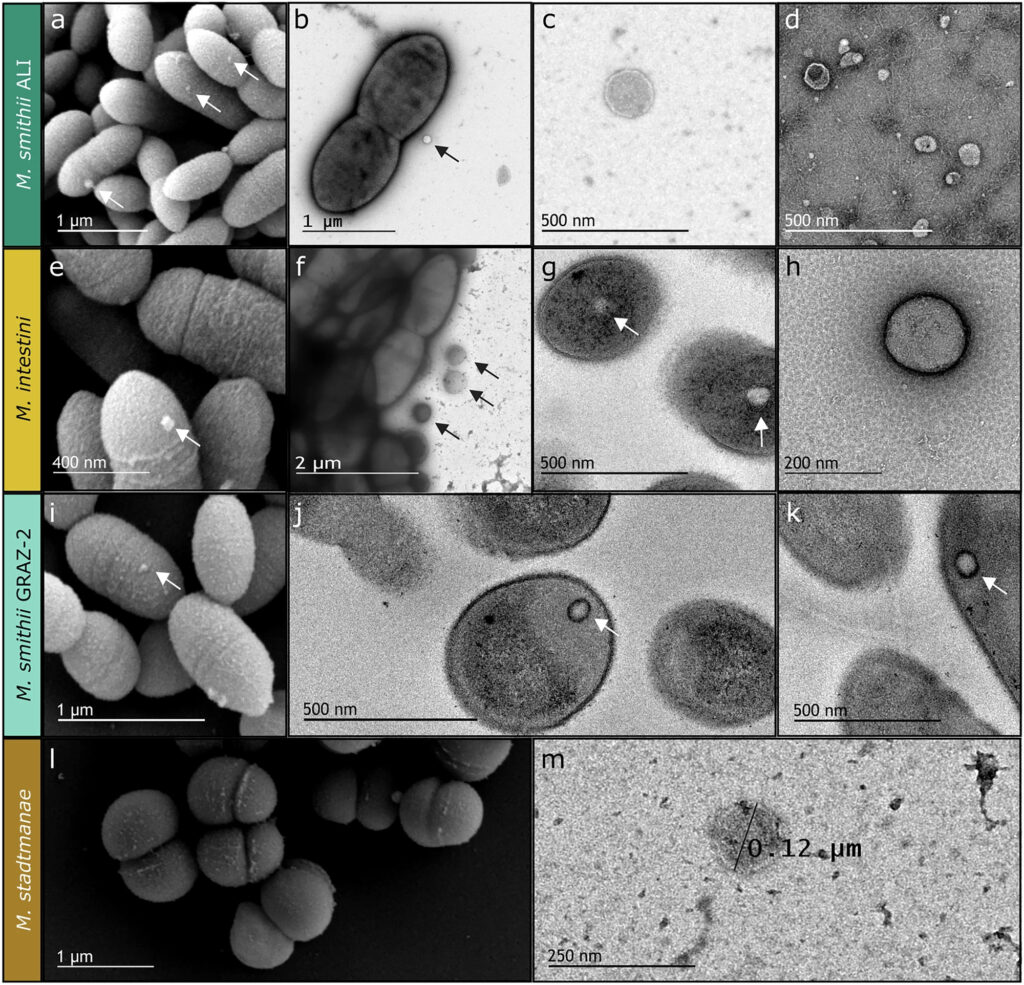
a, e, i, l Scanning electron micrographs of whole cells showing potential vesicle development on their cell surface. b, f, g, j, k Ultra-thin transmission electron micrographs of whole cells, highlighting vesicles located inside or attached to the cells. c, d, h, m Transmission electron micrographs of isolated vesicles. Arrows indicate the presence of archaeal extracellular vesicles (AEVs).
Viktoria Weinberger and colleagues from the lab of CoE Deputy Director of Research Christine Moissl-Eichinger from the Medical University of Graz explored the fascinating world of extracellular vesicles (EVs) produced by human gut archaea.
They analyzed EVs from multiple methanogenic strains (Methanobrevibacter smithii, M. intestini, and Methanosphaera stadtmanae) and found adhesin-like proteins and immunomodulatory metabolites that elicited strain-specific immune responses in vitro. A parallel study by Baquero et al. published in the same issue revealed that EVs from M. smithii carry extrachromosomal circular DNA (eccDNA) and histone-enriched cargo, suggesting novel roles in gene transfer and methanogenesis regulation.
These findings underscore the importance of extracellular vesicles in archaeal biology and open exciting research directions in host-microbe interaction and gut ecosystem dynamics.

